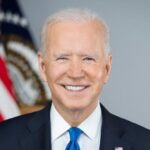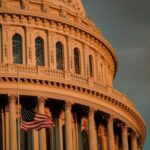President Biden’s latest Build Back Better framework gives boost to solar industry

President Joe Biden speaks during a visit to the NREL Flatirons Campus in Arvada, Colorado. Photo by Werner Slocum, NREL.
After hearing input from all sides and negotiating in good faith with Senators Manchin and Sinema, Congressional Leadership, and a broad swath of Members of Congress, President Biden is announcing a framework for the Build Back Better Act.
President Biden is confident this is a framework that can pass both houses of Congress, and he looks forward to signing it into law. He calls on Congress to take up this historic bill — in addition to the Bipartisan Infrastructure Investment and Jobs Act — as quickly as possible.
This framework will guide the drafting of legislative language. When enacted, this framework will set the United States on course to meet its climate goals, create millions of good-paying jobs, enable more Americans to join and remain in the labor force and grow the economy from the bottom up and the middle out.
The solar industry stands to gain from this latest version of the plan, with $555 billion allocated to clean energy and climate investments. Specifically, the Build Back Better framework will:
- Deliver substantial consumer rebates and ensure middle class families save money as they shift to clean energy and electrification. The consumer rebates and credits included in the Build Back Better framework will save the average American family hundreds of dollars per year in energy costs. These measures include enhancement and expansion of existing home energy and efficiency tax credits, as well as the creation of a new, electrification-focused rebate program. The framework includes a 10-year expansion of tax credits for utility-scale and residential clean energy and will cut the cost of installing rooftop solar for a home by around 30%, shortening the payback period by around five years; and the framework’s electric vehicle tax credit will lower the cost of an electric vehicle that is made in America with American materials and union labor by $12,500 for a middle-class family. In addition, the framework will help rural communities tap into the clean energy opportunity through targeted grants and loans through the Department of Agriculture.
- Ensure clean energy technology — from wind turbine blades to solar panels to electric cars — will be built in the United States with American-made steel and other materials, creating hundreds of thousands of good jobs here at home. The Build Back Better legislation will target incentives to grow domestic supply chains in solar, wind and other critical industries in communities on the frontlines of the energy transition. In addition, the framework will boost the competitiveness of existing industries, like steel, cement and aluminum, through grants, loans, tax credits and procurement to drive capital investment in the decarbonization and revitalization of American manufacturing.
- Advance environmental justice through a new Clean Energy and Sustainability Accelerator that will invest in projects around the country, while delivering 40% of the benefits of investment to disadvantaged communities, as part of the President’s Justice40 initiative. The framework will also fund port electrification; facilitate the deployment of cleaner transit, buses, and trucks; and support critical community capacity building, including grants to environmental justice communities. In addition, the framework will create a new Civilian Climate Corps — with over 300,000 members that look like America. This diverse new workforce will conserve our public lands, bolster community resilience and address the changing climate, all while putting good-paying union jobs within reach for more Americans.
- Bolster resilience and natural solutions to climate change through a historic investment in coastal restoration, forest management and soil conservation. The framework will provide resources to farmers, ranchers and forestland owners, supporting their efforts to reduce emissions. At its peak, the increased investments in climate smart agriculture alone could reach roughly 130 million cropland acres per year, representing as many as 240,000 farms. Farmers, ranchers and forestland owners have long demonstrated leadership in environmental stewardship with strategies that provide benefits for the farm, the environment and the public. These investments will help meet the demand from the farming community for conservation support and enable producers to realize the full potential of climate benefits from agriculture.
SEIA said this framework contains the most ambitious and transformational clean energy policies the group has ever seen from Congress.
“Climate action cannot wait and it’s time for lawmakers to pass policies that drive clean energy deployment,” said Abigail Ross Hopper, president and CEO of SEIA, in a statement. “The plan, which allocates over 30% of the total price tag to climate and clean energy, is the right vehicle for lawmakers to act on.
“Solar is a job-creator, and the long-term tax incentives for solar, storage and domestic manufacturing will put us on a path to decarbonize the electric grid, reach the President’s 2035 clean energy target, and create hundreds of thousands of quality career opportunities in every community. For the sake of our climate, the economy and American workers, the solar industry is urging Congress to come together and pass this momentous legislation as soon as possible,” she continued.
The future of this framework will be determined by the legislature in the coming weeks.
News item from The White House. Updated with SEIA’s statement at 1:11 p.m. ET.
<!–
–>
Original Source: https://www.solarpowerworldonline.com/2021/10/bidens-latest-build-back-better-framework-boosts-solar-industry/












